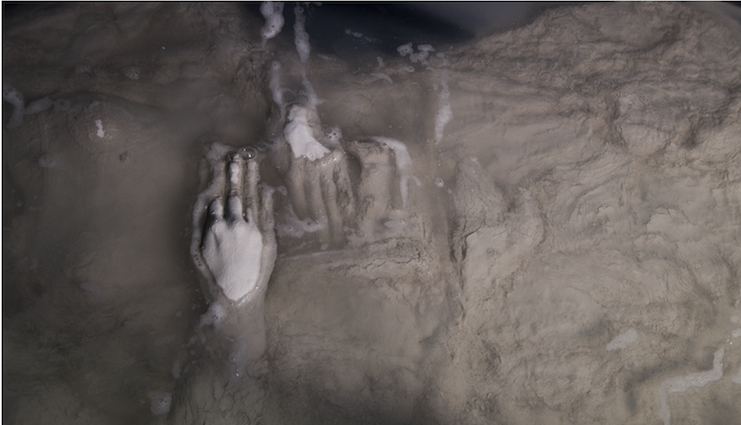Cyrus Tang
Cyrus (Wai-Kuen) Tang (b. 1969, Hong Kong)
“My art practice reflects sentiment of nostalgia through translation of disappearance into remembrance and fantasy. It reflects my examination of the paradox of reconstructing ephemeral mental images and sensations in permanent materials.
In my use of these materials I stress the process of disappearance. I think of disappearance as the vanishing or loss of something unique. That is to say, as a unique absence. Paradoxically, what disappears leaves a phantom residue, which is an excess meaning and experience. My works suggest a phantasmic site of real loss. Through out my practice, I have employed a range of variously permanent and ephemeral materials including clay, water, ash, steam, snow, human’s heartbeat, animal bones, and human hair in order to produce a visual representation suggestive of the contrast and contradiction between appearance and disappearance, and between ephemerality and permanence.”
Artist Biography
Born in Hong Kong, Cyrus Tang moved to Australia in 2003. She finished her Degree (Hons) of Fine Arts at Victoria College of the Arts, Melbourne in 2004, and her Master of Fine Arts (Research) in Monash University, Melbourne in 2009. In these years, Cyrus has been offered by different residency programmes, including The National Art Studio in South Korea in 2012, Cite International de Arts, Paris in 2009 and The Banff Centre, Canada in 2008. Her works has been shown interstate in Australia and various countries including South Korea, Singapore, Japan, France, Shanghai and Sweden. She is the recipient of the Skills and Arts Development 2011 and New Work (Emerging) Grant 2009 of Australian Council for the Arts, George Mora Foundation Fellowship 2008, Theodor Urback Encouragement Award 2004, and The National Gallery of Victoria-Trustee Award 2003. She is based in Melbourne, Australia. Her work currently is represented by Anna Pappas Gallery, Melbourne, Australia.
During her resicency at HIAP Tang continues to work with the subject of ephemerality as a short-lived of tangible substances. Based on people, objects and nature, different traces are left. The layers are built or they disappear, based on the history and the movement of space and time. Traces are rather revealed as the remains of the flow of memories that wonders like the shadow around the boundary with our surrounding. In some ways traces possess both the ambiguity and multiplicity. In this project, She will continue to explore those traces that raise the value of existence of something faintly or do it in various appearances and forms.

